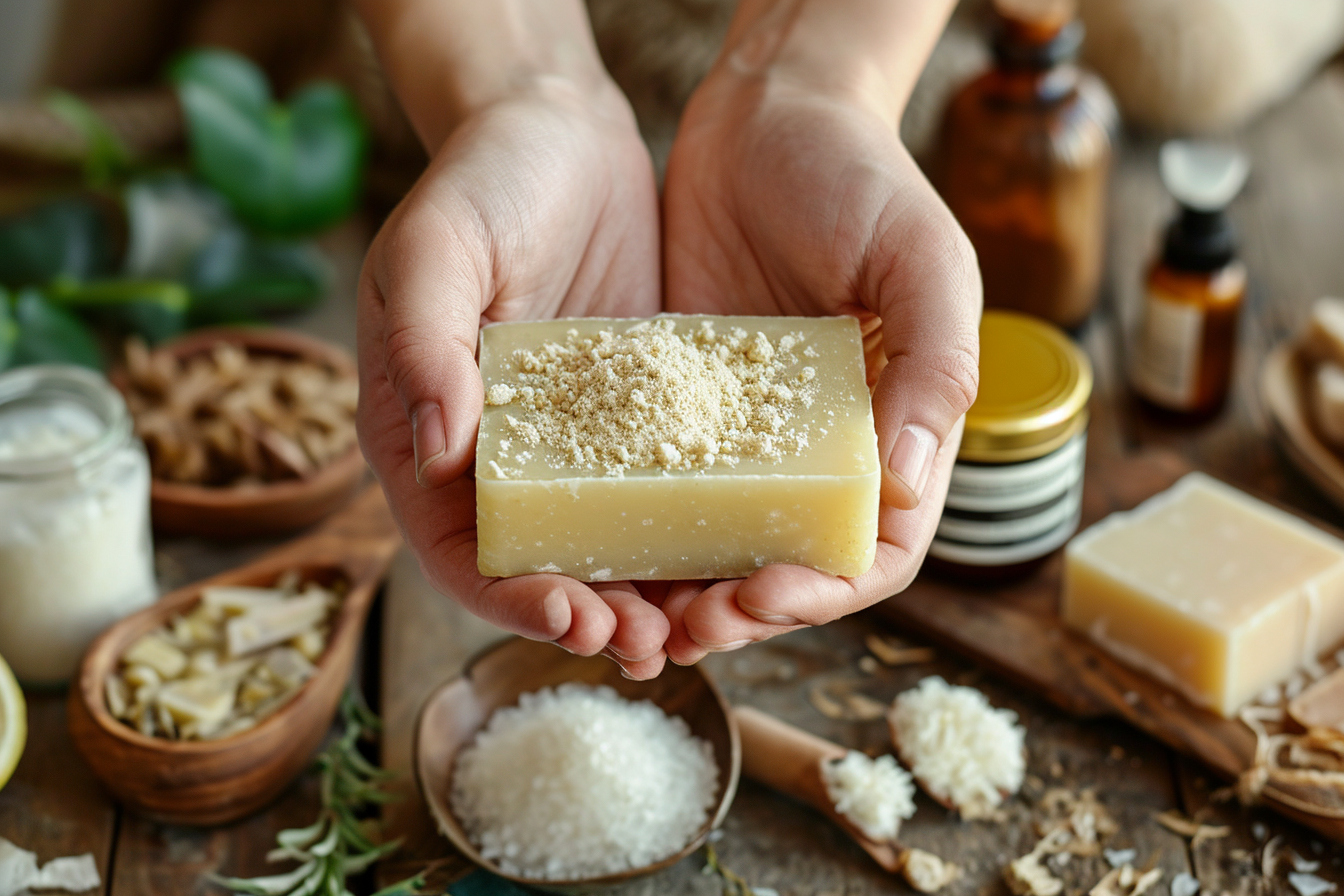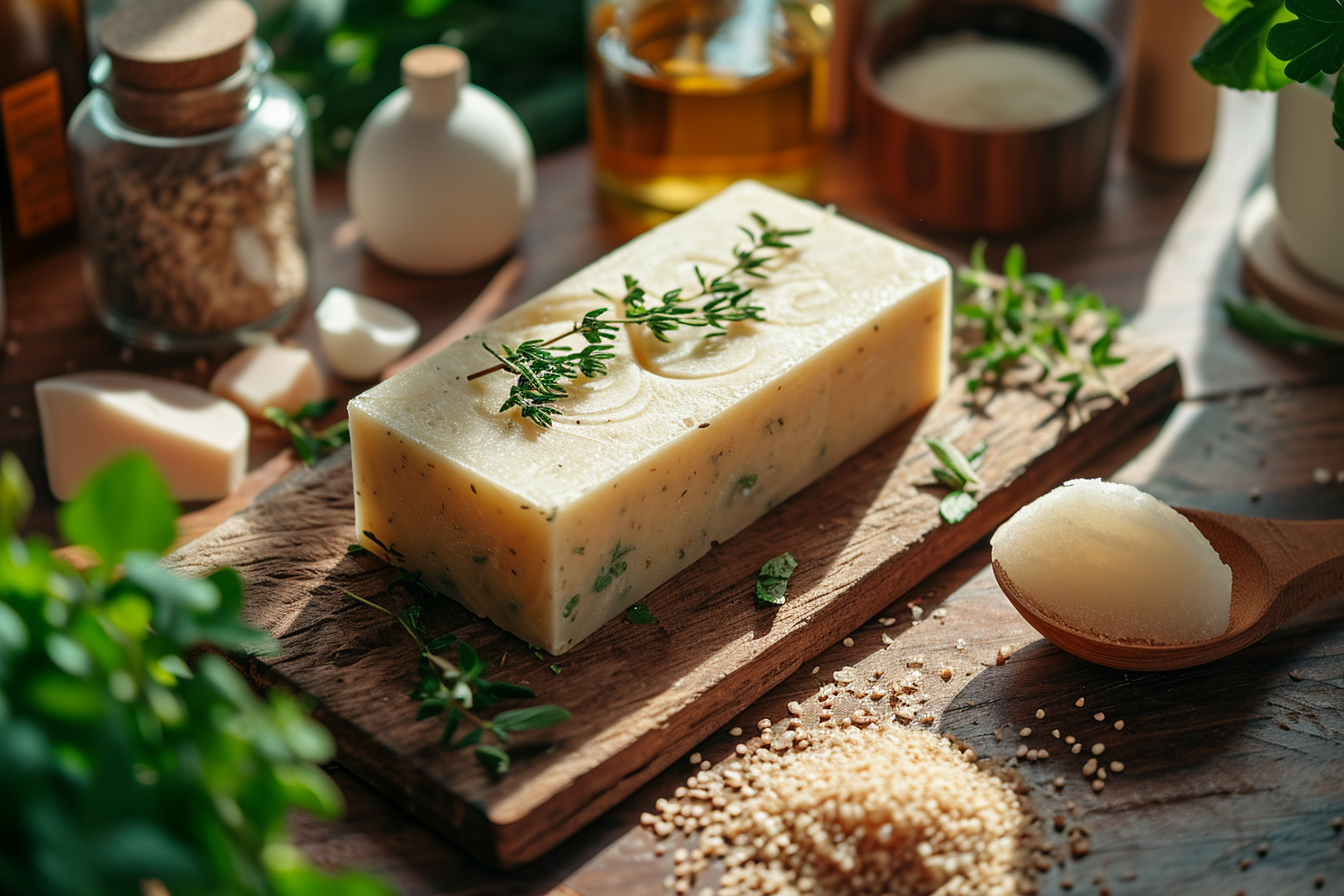Solid shampoos are becoming a staple in eco-friendly households and among enthusiasts seeking to minimize their environmental footprint. Unlike traditional liquid shampoos, solid shampoos are concentrated bars formulated without water, making them a sustainable alternative as they require minimal packaging and result in lower shipping weights. These bars are convenient for travel, typically last longer than their liquid counterparts, and can be customized to suit different hair types and preferences.
The benefits of crafting solid shampoo bars

Creating your own solid shampoo bars gives you full control over the ingredients, ensuring the omission of harsh chemicals and the inclusion of nourishing components that benefit hair health. It’s also an economical practice as homemade bars can be more cost-effective in the long term. In addition, it’s an opportunity to unleash your creativity by experimenting with different scents, colors, and added haircare benefits.
Essential ingredients in solid shampoo bars
Creating a well-balanced shampoo bar requires understanding the function of each ingredient. Here are the essential components you’ll be working with:
surfactants
Surfactants are the cleansing agents responsible for suds and removing oil and dirt from your hair. Typically, solid shampoo bars include mild surfactants like Sodium Cocoyl Isethionate (SCI) or Sodium Lauryl Sulfoacetate (SLSA) to maintain the hair’s natural oils while ensuring effective cleansing.
Butters and oils
Natural butters and oils such as shea butter, cocoa butter, and coconut oil provide moisture, nourishment, and softness to the hair. These ingredients can also help with bar hardness and longevity.
Conditioning agents
Ingredients like BTMS (Behentrimonium Methosulfate), a mild emulsifying and conditioning agent, help in detangling hair and smoothing the cuticles, resulting in a silky feel after washing.
additives
Additional components like proteins, panthenol, herbal extracts, and essential oils target specific hair needs and can be customized according to preference. For instance, essential oils can offer a delightful aroma as well as particular hair benefits: rosemary oil can stimulate growth, while lavender can soothe the scalp.
Crafting your own solid shampoo bars
Diving into the creation process, it’s vital to follow a formula that balances all the ingredients to produce a solid shampoo that cleans effectively without stripping the hair.
Creating your formula
Before you begin mixing ingredients, devise a formula based on the properties you want your shampoo bar to have. Consider the hair type it’s intended for—oily, dry, normal, or color-treated—and tailor the ingredients accordingly. Fine-tuning your recipe is often a process of trial and error, so patience and adjustments are key.
Weighing ingredients
Accuracy is paramount in creating a functional solid shampoo bar. Weigh your ingredients carefully using a digital scale and record all measurements for future reference and troubleshooting.
Melting and mixing
After weighing, melt butters and combine them with oils and surfactants. This step usually involves using a double boiler method to gently melt and incorporate the components without overheating, as some ingredients may degrade at high temperatures.
Application of heat
Apply heat carefully, monitoring the temperature with a thermometer. Certain ingredients may require different temperatures to melt or combine effectively. Overheating can lead to a loss of efficacy, especially in heat-sensitive additives.
Incorporating additives
Once your base mixture is homogenous, it’s time to add your chosen additives. This step is typically done at a lower temperature to prevent any degradation of more delicate ingredients like essential oils or herbal extracts.
molding
Pour your mixture into molds immediately after combining all ingredients. Silicone molds are popular for this purpose as they’re flexible, non-stick, and easy to clean. The size and shape of the molds can be personalized to your preference.
solidifying
Allow the bars to harden and solidify, which can take several hours to overnight. Unmolding too early can result in deformed bars, so it’s worth being patient through this stage.
curing
Curing your shampoo bars is a critical step once unmolded. This period allows excess water to evaporate, ensuring a harder, longer-lasting bar. Place the bars in a dry, well-ventilated area for several weeks and flip them periodically to ensure even curing.
Testing and troubleshooting
Testing your solid shampoo bars is essential in finalizing your formula. Assess lathering ability, cleansing efficiency, and hair feel after use. Should issues arise such as a bar that’s too soft or too harsh, you’ll need to revise your ratio of ingredients.
Advanced techniques and considerations

As you become more proficient in shampoo bar creation, you’ll want to explore advanced techniques and concepts that can further improve your craft.
Ph balancing
Hair and scalp health is influenced by the pH level of your shampoo. Solid shampoos should ideally have a pH between 4.5 and 5.5. You can test and adjust pH levels using pH strips and by incorporating ingredients such as lactic acid or citric acid to lower pH if necessary.
Color and shape creativity
Experiment with natural colorants like clays or mica to add visual appeal to your shampoo bars. Considering the shape, think about the grip and application, opting for ergonomic designs that are both functional and aesthetically pleasing.
customization
Creating shampoo bars for specific hair concerns like dandruff, thinning hair, or excessive oiliness will allow you to offer targeted solutions. Research ingredients that are known to address these issues and incorporate them into your formula effectively.
sustainability
Consider the environmental impact of your ingredient choices. Ethically sourced materials, biodegradable surfactants, and plastic-free packaging are elements that appeal to environmentally conscious consumers.
Scaling production
Should you decide to scale up your production for retail, there are additional considerations such as labeling, safety testing, and adherence to cosmetic regulations that will come into play. Ensuring consistency across larger batches is also a challenge that requires careful planning and precise scaling of your recipes.
Final thoughts on crafting solid shampoo bars
Mastering the art of solid shampoo creation is a process that rewards patience, precision, and a willingness to experiment. As you delve into crafting your unique formulations, your expertise will grow, enabling you to produce high-quality shampoo bars that are both effective and enjoyable to use. With every iteration, you refine your skills and push closer to creating the perfect solid shampoo bar that caters to a variety of hair care needs.
Embracing continual education on ingredients and staying updated with industry trends will also help you refine your craft. Interact with communities of fellow shampoo bar enthusiasts, join workshops, and exchange knowledge to foster your growth in this fascinating pursuit of sustainable haircare innovation. As you progress, remember that mastering solid shampoo creation is as much an art as it is a science, demanding creativity alongside technical proficiency. By blending these elements harmoniously, you validate your role as a true artisan in the realm of personal care products.

